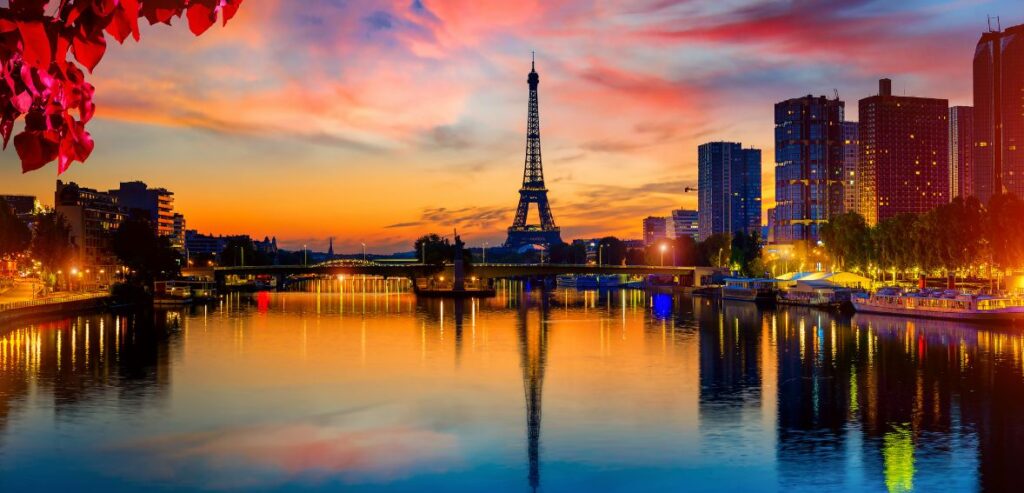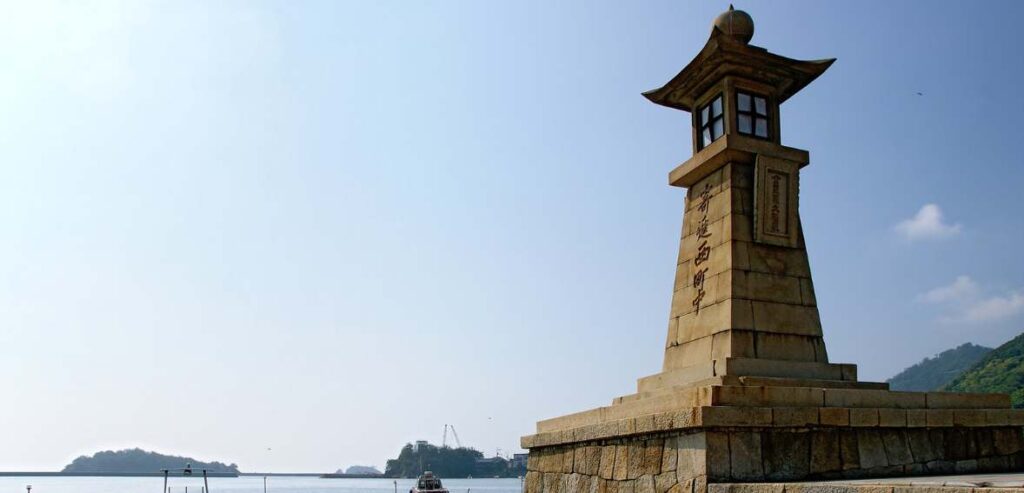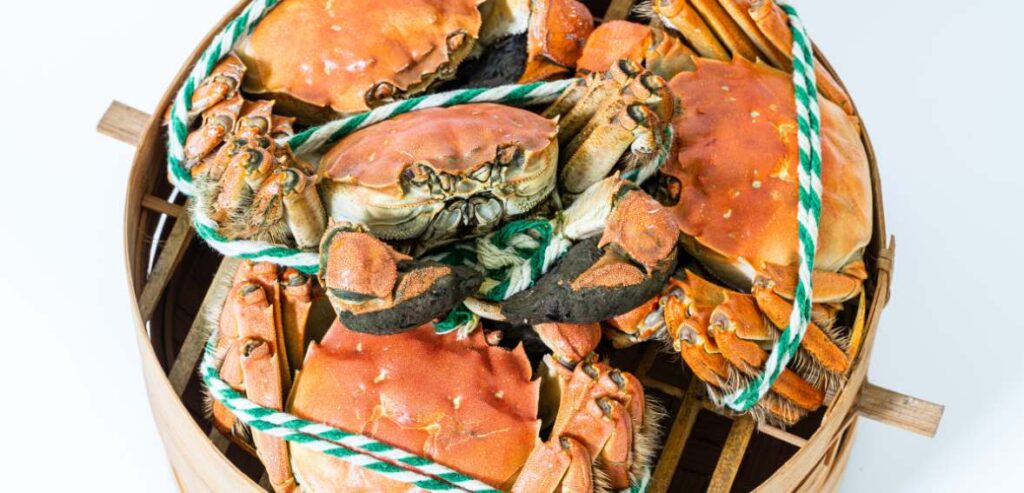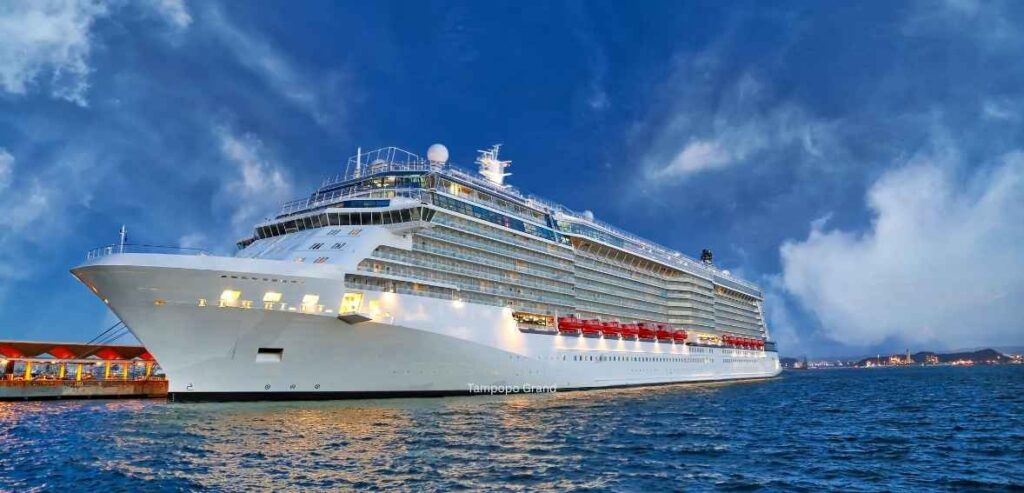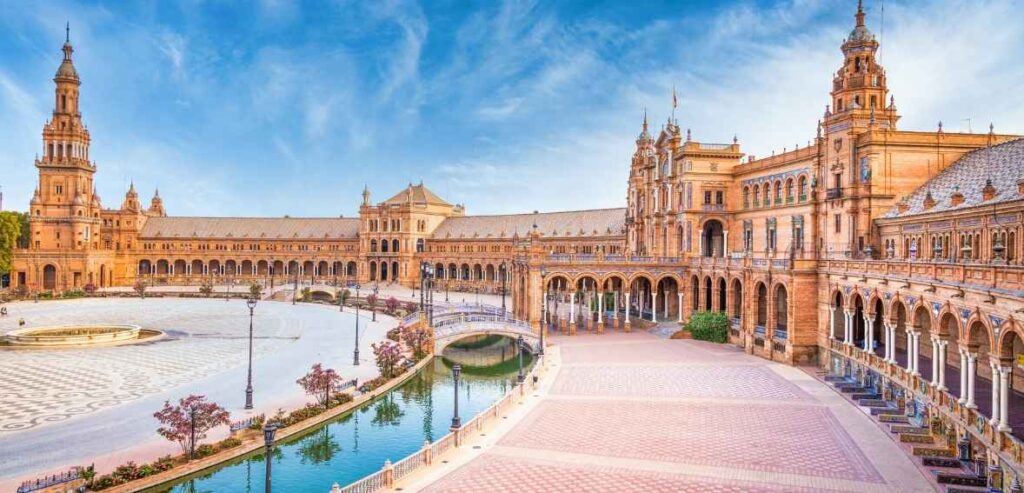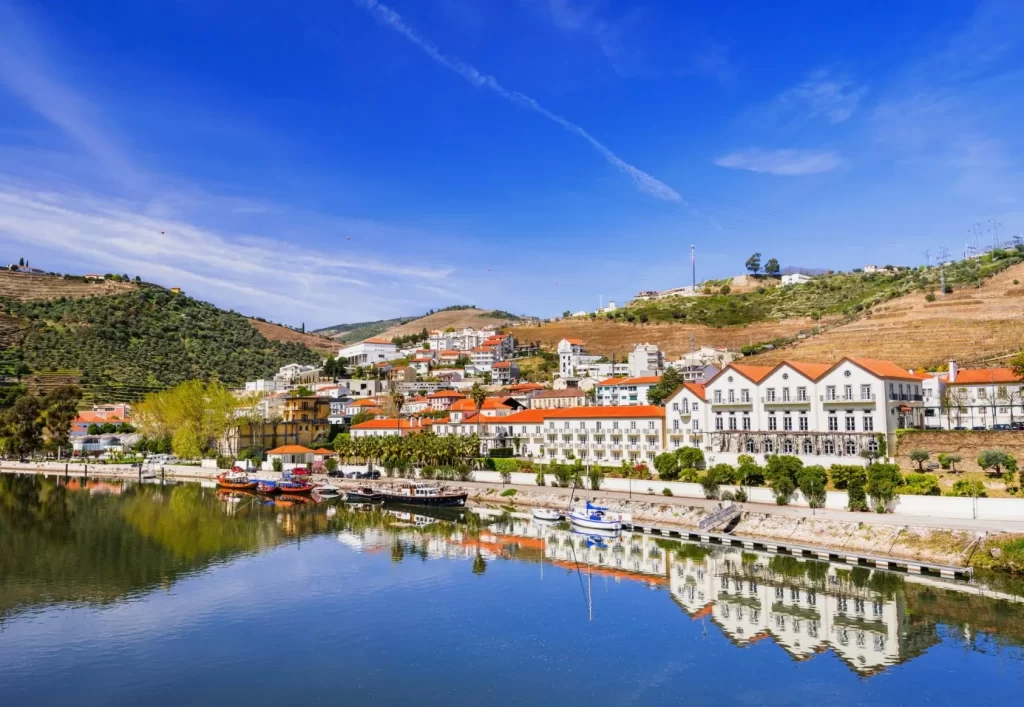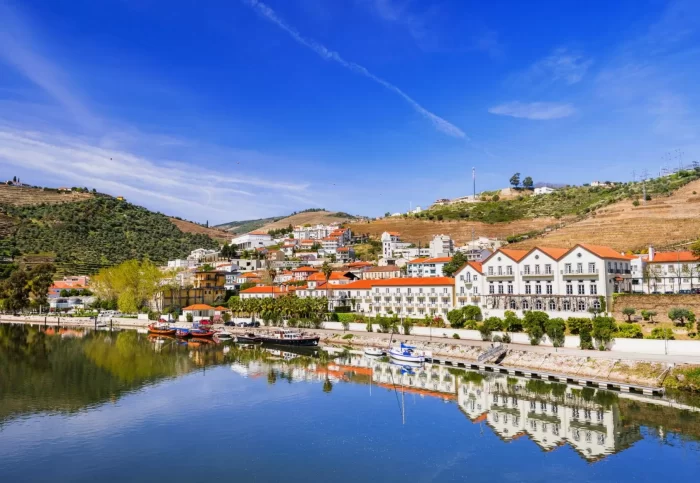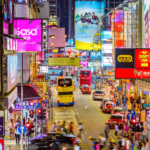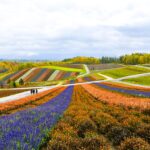Now Reading: Spain & Portugal Day 3 – Pre-Cruise in Spain (Toledo)
-
01
Spain & Portugal Day 3 – Pre-Cruise in Spain (Toledo)
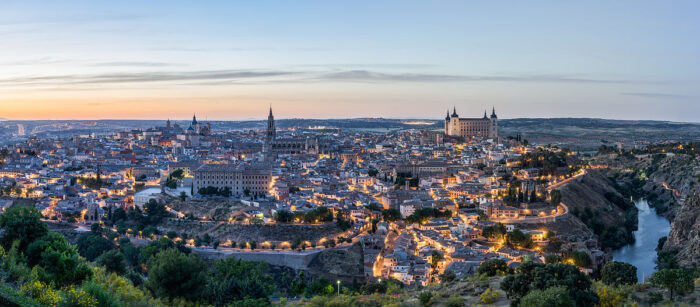
Spain & Portugal Day 3 – Pre-Cruise in Spain (Toledo)
Before embarking on our highly anticipated Iberian Peninsula cruise, we had one more item locked onto our Spanish bucket list: the ancient city of Toledo. With its storied history as a melting pot of Muslim, Christian and Jewish cultures, Toledo offered the perfect primer on Spain’s diverse heritage and architectural treasures. In this post I talk about my Spain & Portugal Day 3 – Pre-Cruise in Spain (Toledo).
The “Imperial City” makes an ideal day trip from Madrid, just a short 45-mile journey southwest by car or train. We snatched a taxi and pointed it in the direction of Toledo’s walled old quarter after enjoying a hearty Spanish breakfast and thick hot chocolate at our hotel.
Approaching Toledo’s Fortified Splendor
As our cab climbed the curving approach roads flanked by arid hills, Toledo’s iconic medieval skyline gradually emerged like a mirage from the Spanish countryside. My first glimpses revealed an incredibly preserved ancient stone citadel rising imperiously from a dramatic granite foothill, entirely surrounded by the looping Rio Tajo river.
The Toledo of illustration and imagination materialized before my eyes – a fanciful fortified city crowned by the soaring Gothic cathedral and a formidable alcázar (fortress) keeping watchful guard over a tangle of cobblestoned callejones and hidden plazas. This remote, brilliantly carved monument to history felt like the Iberian counterpart to timeless walled cities like Jerusalem – albeit with a uniquely Spanish flair for romance and grandeur.
Navigating Toledo’s Tangled Lanes
We met our passionate local guide, Alejandra, just outside the majestic Puerta de Bisagra entry gates, which have protected Toledo’s Old Town core for over six centuries. She warned us that Toledo’s tilted labyrinth of lanes can disorient even savvy travelers, so we’d need to stick close during our walking tour.
Over the next few hours, we became delightfully lost in Toledo’s elaborate medieval web of donkey pathways and shaded pasajes barely pierced by slivers of Spanish sunlight. This was the original GoT King’s Landing – minus the CGI dragons and bloodshed…well, mostly.
Every turn revealed another glimpse into the city’s multicultural tapestry, from the cavernous Gothic Santo Tomé church anchored by El Greco’s masterpiece to the hushed 14th century Synagogue de Santa María la Blanca with its ornate Hebrew inscriptions and stone artesonado ceilings. While densely occupied through the centuries by Muslims, Christians and Jews, religious tolerance was enforced – exemplified by the combined Mudéjar architectural mashups blending Islamic and Renaissance aesthetics.
The apex arrived when we stumbled upon Toledo’s immense Gothic cathedral emerging from a nondescript archway like a bedazzled giant. Constructed over six centuries, this High Gothic party piece dazzles with its flying buttresses, rosette windows and intricate relief sculptures adorning every square inch of honey-colored stone. Even the interior soars with vast stone forests, technicolor stained-glass, and an elaborate baroque high altar gleaming in gold-leaf. It’s hard to fathom the faith and artistry required to manifest such an enduring jewel.
Navigating A Master’s Footsteps
No Toledo tour would be complete without walking the footsteps of El Greco – the eccentric 16th century Greek-born artist who immigrated to the city and left an indelible creative legacy. We spent over an hour marveling at his dramatic elongated figures and bold color palettes adorning the walls of the Iglesias de Santo Tomé and Santa María la Blanca, as well as his newly renovated home/museum on the quiet Jewish Quarter backstreets.
Beyond sublime art, these winding capillary alleyways in the monastic quarter permitted us to experience the visceral textures of Toledo through centuries-old traditions still animating the neighborhood today. Lace curtain tintinnabulation accompanied backstreet matrons dusting potted plants spilling from wrought-iron balconies. Cheery children kicked tattered futbol balls in tucked-away plazas circled by stooped retirees in felt caps murmuring card games. And beyond the crooked shadows of archways, the pockmarked aroma of woodfire chimneys promised decadent gameychanchos and manchego meals on the horizon.
Ancient Fortifications & Sweeping Panoramas
Once we’d achieved sensory overload in the cathedral quarter, Alejandra guided us across Toledo’s Puente de San Martin Roman bridge to the Mirador del Valle viewpoint. Equal parts game of thrones and Rapunzel fairy tale, the vista showcased Toledo’s fairy tale skyline undulating across the River Tajo’s granite valley like the gnarled spine of an ancient dragon. We gazed for ages at the impossibly preserved Alcázar fortress tower, tile-capped monumental churches, and wonder how medieval builders manifested such exquisite beauty in this harsh, inhospitable terrain.
Below the mirador we ducked into Toledo’s redoubtable fortified walls on the Caminio de Ronda – a raised pathway secured between internal and external battlements where armor-clad knights once patrolled. Even in modern times, you could sense their phantom echoes resonating through the hot Spanish breezes while tenaciously guarding Toledo’s timeless silhouette.
The Carmelite Convent & Delicious Decompression
Our final Toledo highlight revealed itself next – an ultra-rare glimpse inside the forbidden walls of the Real Monasterio de San José. This 17th century convent and church operates today much as it did three centuries ago when it was home to Carmelite sisters – many of them from noble Spanish families. After ringing the iron gate and securing special permission, we were ushered into the hushed cloister and sanctuary stunningly adorned with baroque chapels awash in Mudéjar, Moorish, Hebrew and Greek embellishments. The tiled, arabesque domed chambers swirled with haunting whispers of billowed habits slipping past us in the shadows.
Our sublime spiritual and sensory immersion in Toledo had depleted our own physical energy reserves. So Alejandra led us to a traditional taberna in the atmospheric Jewish Quarter to decompress over ice-cold pitchers of sangria alongside soulful delights like runny tortilla Española, punchy juicy olives, and charred piquillo pepper salads drizzled with olive oil. Thankfully no stamina was required to fully appreciate the ripe rustic flavors while basking in Toledo’s fevered afternoon sunlight dancing across the taverna’s dim brick recesses.
As our tapas and wine supplies dwindled, it was sadly time to bid farewell to this magical city suspended in medieval time. We departed as we arrived – through the Puerta de Bisagra, but with our minds unlocked and expanded by the profound beauty and enduring complexities that echo through Toledo’s lyrical stone bones. Our lessons about Spain’s intricately woven roots of Muslim, Jewish and Catholic culture would linger as we prepared our souls for the next chapter aboard our eagerly awaited Iberian cruise.
Tips for Mastering Toledo on a Day Trip:
• Plan to arrive early – between 9-10am to beat tour bus crowds
• Book a passionate local guide to fully immerse in Toledo’s layered histories
• While the core is walkable, wear sunscreen and good shoes to combat the hills
• Be sure to visit El Greco’s masterworks at Santo Tomé, Sinagoga de Santa María
• Definitely pay the premium to enter the Gothic Cathedral during your visit
• Consider a guided tour of the Monasterio de San Jose for sublime immersion
• Stop for tapas and wine to decompress in the shade of the Jewish Quarter
Spain’s living museum of Toledo has survived countless invasions and conquests over its 2,500 year history precisely because its impregnable medieval walls possess the power to rewrite your soul. Even if your Spanish pilgrimage allows only a fleeting glimpse, surrender to the imperialist gravity of this ancient, achingly romantic fortress city. Toledo’s rapturous spirit will remain etched onto your heart and memories long after you’ve departed its dreamy embrace. I hope you like my Spain & Portugal Day 3 – Pre-Cruise in Spain (Toledo) trip.


